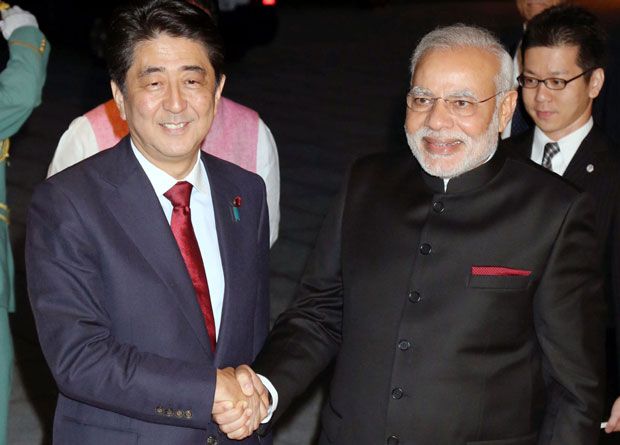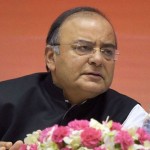
Tokyo: Prime Minister Narendra Modi flew into Japan on Saturday on a five-day official visit as their governments seek to boost security ties and counter a increasingly assertive China. Narendra Modi met Japan’s PM Shinzo Abe ahead of formal bilateral talks in Tokyo. An official agreement has been signed to facilitate cultural exchanges between Varanasi and Kyoto.
Modi arrived at Kansai International Airport near Osaka, western Japan, by a special plane for a night in the nearby ancient city of Kyoto. He was to have an unofficial dinner with Japanese Prime Minister Shinzo Abe, a foreign ministry official said.
Modi will visit historic sites and an academic institution in Kyoto on Sunday, before moving to Tokyo for meetings on Monday with Japanese government and business leaders, including a summit with Abe, the official said.
Abe and Modi are expected to affirm cooperation in ensuring a “peaceful and stable maritime order,” a Japanese official told Kyodo news agency.
Both nations hope to curb Beijing’s rising activity in the East and South China seas and the Indian Ocean.
In New Delhi, the Indian premier told Japanese media in an interview on Friday that the two nations could “upgrade” their relations in the fields of defence and security.
“I see in the recent changes in Japan’s defence export policies and regulations a possibility to engage in a new era of cooperation in high-end defence technology and equipment,” he said.
In the summit meeting, the two premiers are likely to agree on launching a “two-plus-two” security consultative framework involving their foreign and defence ministers, according to Kyodo.
Japan already has such arrangements with the United States, Australia, Russia and France.
Abe and Modi are also expected to discuss a possible Indian purchase of Japanese-made US-2 amphibian planes.
During Modi’s trip, his first bilateral visit outside South Asia since taking office in May, the two countries will seek to conclude talks for a civil nuclear pact that would allow Tokyo to export nuclear-related technology to New Delhi, Kyodo said.
On the economic front, Abe is expected to pitch Japan’s high-speed bullet train technology, Kyodo said.
It added that Abe and Modi were expected to agree to jointly produce rare earths that could be exported to Japan, a move that would further reduce Japan’s reliance on China for supply of such minerals.
Rare earths are vital to manufacture high-tech products such as hybrid cars and mobile phones.
Boost exports
A Japanese official who asked not to be named said India had expressed interest in buying amphibious search-and-rescue planes for its defence forces.
Japan lifted its self-imposed ban on military exports earlier this year, clearing the way for such a deal.
The foreign ministry said Modi’s focus would also be on boosting Indian exports — he is reportedly travelling with a large business delegation — and seek Japanese support in infrastructural developments.
This could include Japanese investment in new high-speed train networks after the new government said the country’s dilapidated railways needed an “immediate course correction”.
NDA government has changed limits on foreign direct investment in defence and did away with them altogether for the railway industry.
Japan is famous for its “Shinkansen” bullet train system, but rival China has had more success exporting its technology at lower prices.
Japan is India’s fourth-largest investor, with Japanese firms involved in infrastructure projects including the Delhi Metro, while Japanese automakers have long been churning out cars in India.
The two leaders are also expected to restart negotiations on nuclear energy, which have been suspended since Japan’s Fukushima nuclear disaster in 2011, to help India’s crippling power shortages.
Trade between India and Japan has steadily increased over the last decade, and the two countries signed a free trade pact in 2011.


